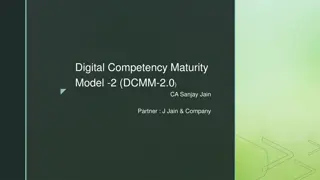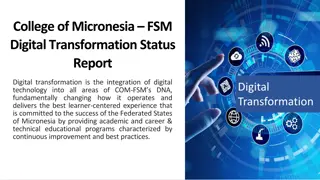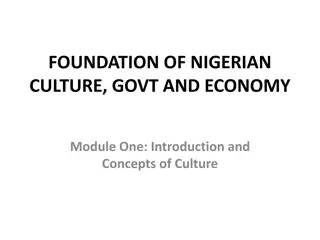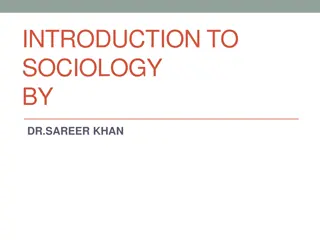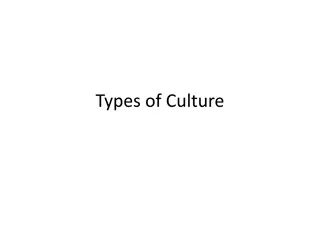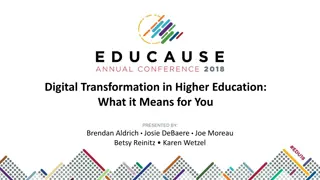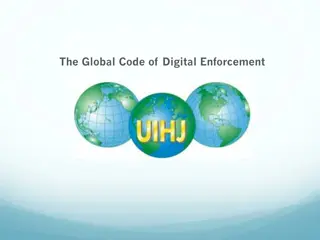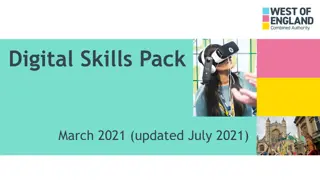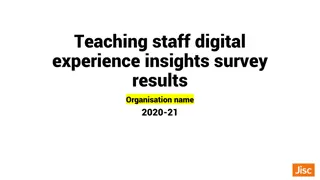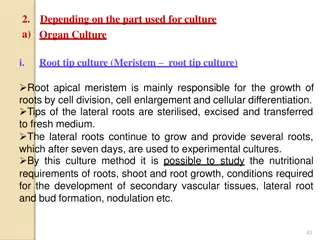Embracing Digital Culture
This content delves into the integration of digital culture in the banking sector, highlighting concepts such as the ECL framework for provisioning, Central Bank Digital Currency (CBDC) design choices, risks associated with CBDC, and the global adoption of UPI for digital transactions.
Download Presentation

Please find below an Image/Link to download the presentation.
The content on the website is provided AS IS for your information and personal use only. It may not be sold, licensed, or shared on other websites without obtaining consent from the author.If you encounter any issues during the download, it is possible that the publisher has removed the file from their server.
You are allowed to download the files provided on this website for personal or commercial use, subject to the condition that they are used lawfully. All files are the property of their respective owners.
The content on the website is provided AS IS for your information and personal use only. It may not be sold, licensed, or shared on other websites without obtaining consent from the author.
E N D
Presentation Transcript
Embracing Digital Culture CA Dr GOPAL KRISHNA RAJU FCA, ACMA, ACS, PGDOR, PGDFM, DISA, M.PHIL Visiting Faculty, Indian Institute of Management
Introduction of ECL Framework for Provisioning by Banks Through ECL, banks can estimate the forward-looking probability of default for each loan, and then by multiplying that probability by the likely loss given default, the bank gets the percentage loss that is expected to occur if the borrower defaults. Reference: https://rbidocs.rbi.org.in/rdocs/Publications/PDFs/DPECL160012023AE79B7B546C94715AA8468B0811096F5.PDF
News RBI and the Central Bank of United Arab Emirates have signed an MoU to conduct pilots to test central bank digital currency (CBDC) transactions for cross-border payments. During the interlinking of Singapore and Thailand s FPS (PayNow-PromptPay linkage), it was found that the national AML laws in both countries have different requirements relating to the nature of customer information that was supposed to be recorded under the law while PromptPay displayed the receiver s full name, PayNow displayed the nickname of the receiver. Similarly, data protection standards for cross-border data transfer are also not uniform across countries
Central Bank Digital Currency The key design choices to be considered for issuing CBDCs include (i) Types of CBDC to be issued (Wholesale CBDC and/or Retail CBDC), (ii) Models for issuance and management of CBDCs (Direct, Indirect or Hybrid model), (iii) Form of CBDC (Token-based or Account-based), (iv) Instrument Design (Remunerated or Non-remunerated) and (v) Degree of Anonymity. Reference: https://rbidocs.rbi.org.in/rdocs/PublicationReport/Pdfs/CONCEPTNOTEACB531172E0B4DFC9A6E506C2C24FFB6.PDF
Central Bank Digital Currency CBDC could also pose certain risks that may have a bearing on important public policy issues, such as risk to financial stability, monetary policy, financial market structure and the cost and availability of credit. They need to be carefully evaluated against the potential benefits.
NPCI Bhutan was the first country to allow UPI transactions through BHIM App. Nepal adopted UPI for digital transactions in March 2022 India's UPI system, on the other hand, is far ahead of its global peers. It's processing 2.7 times more instant payment transactions than China (18 billion in 2021) and 6.5 times more than the combined transaction figure of the US, Canada, the UK, France, and Germany (7.5 billion)
Data Sharing The India approved the National Data Sharing and Accessibility Policy (NDSAP) on 9 February 2012. Union Government of The objective of the policy is to facilitate Government of India owned shareable information in both human readable and readable forms. access to data and machine
Data Sharing Agreement https://Sahamati.org.in https://dst.gov.in/sites/default/files/gazetteNotificationNDSAP.pdf
Reference: Account Aggregator Framework https://rbidocs.rbi.org.in/rdocs/Publications/PDFs/DPECL160012023AE79B7B546C94715AA8468B0811096F5.PDF
RBI & Cryptocurrencies 24th Dec 2013 - RBI cautions users of Virtual Currencies against Risks https://www.rbi.org.in/commonman/Upload/English/PressRelease/PDFs/PR1261 241213.PDF 1st Feb 2017 - RBI cautions users of Virtual Currencies The Reserve Bank of India advises that it has not given any licence / authorisation to any entity / company to operate such schemes or deal with Bitcoin or any virtual currency. As such, any user, holder, investor, trader, etc. dealing with Virtual Currencies will be doing so at their own risk. https://www.rbi.org.in/commonman/Upload/English/PressRelease/PDFs/PR205 4EN010217.PDF
RBI & Cryptocurrencies While Bitcoin started more than a decade back in 2008, until 5 years ago, total market capitalisation of all cryptocurrencies was only $20 billion (February 2017). This went up to $289 billion in February 2020 and thereafter exploded to reach a peak of $2.9 trillion in November 2021. Currently (Feb 09, 2022) it stands at $1.98 trillion. Bitcoin accounts for 42% of this market capitalisation, the top two cryptocurrencies account for 61% while the top five account for 71%. The total number of cryptocurrencies is at 17,436 and the total number of crypto exchanges is 458. https://rbidocs.rbi.org.in/rdocs/Speeches/PDFs/CRYPTOCURRENCIESFBEA27DE561D427DB9D D5F25BE2CB8BB.PDF
CA Dr GOPAL KRISHNA RAJU Partner | K GOPAL RAO & CO | Chartered Accountants | Mumbai, Chennai, Bengaluru, Hyderabad, Trichy, Madurai & Tiruvallur Email: gkr@icai.org Mobile: 98400 63269 | 98401 63269 gkr@icai.org | 9840063269



